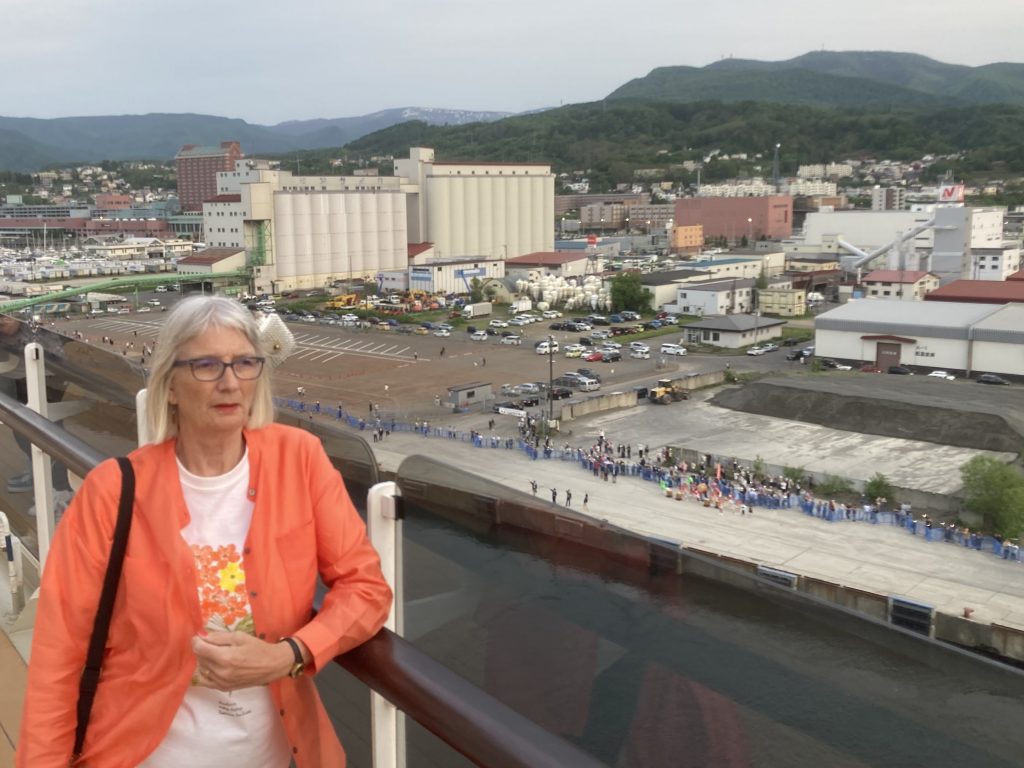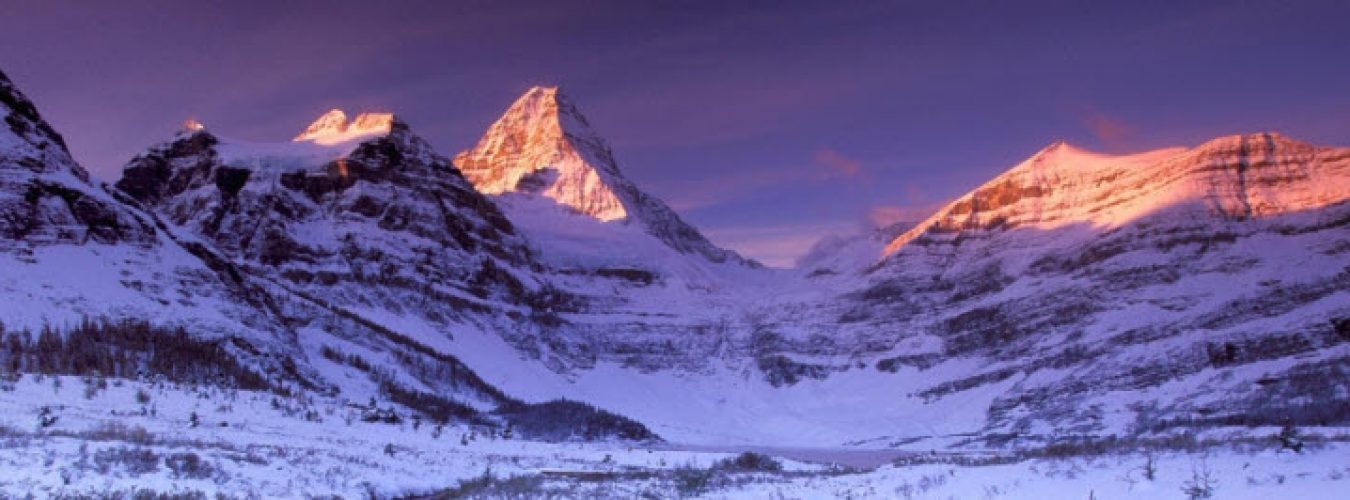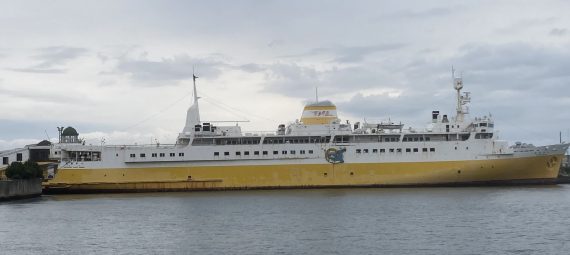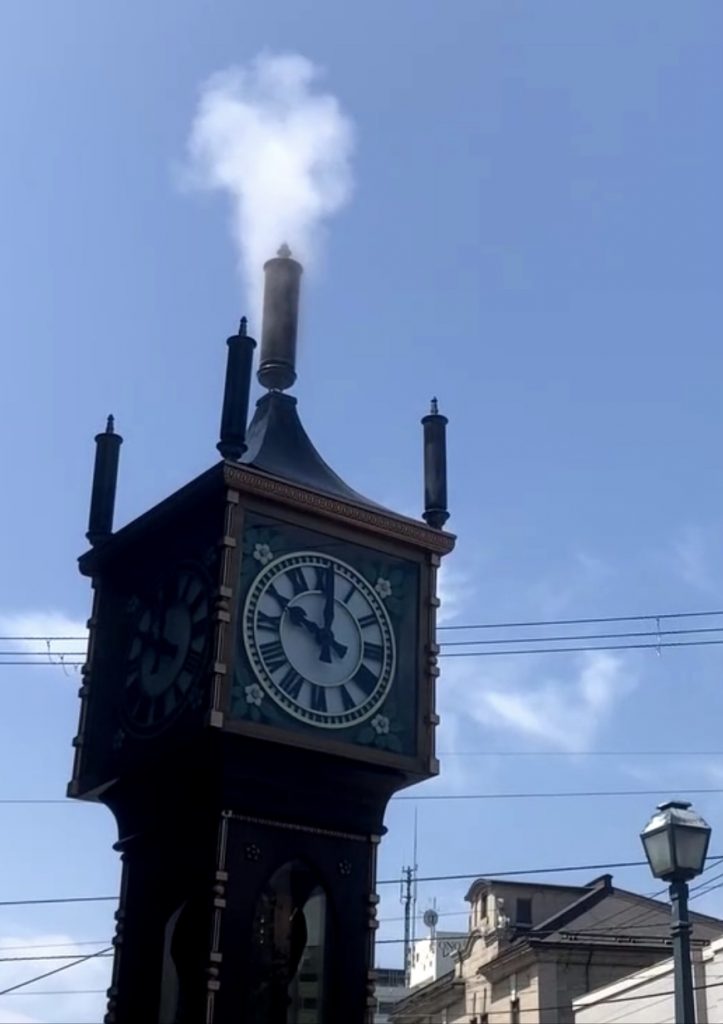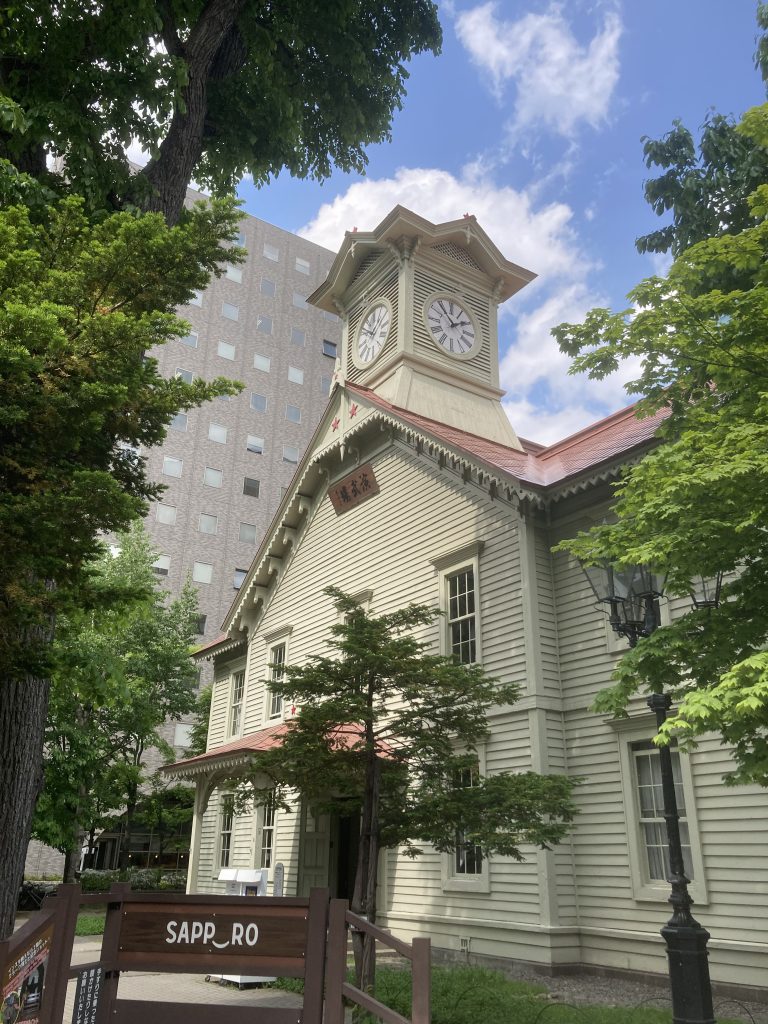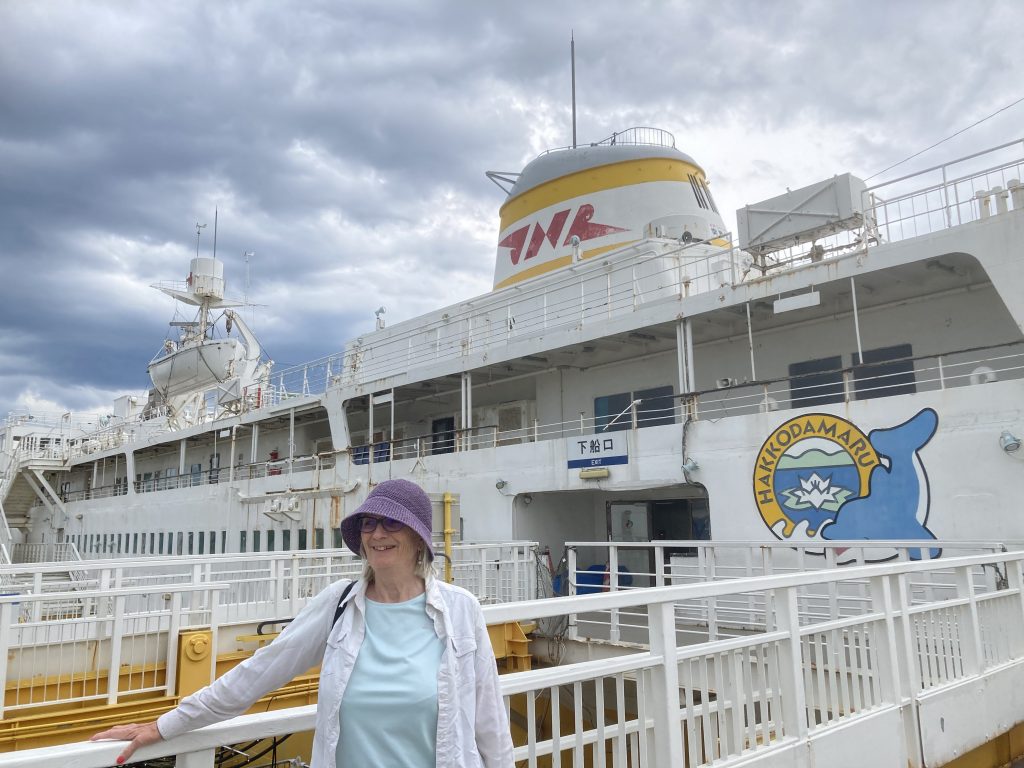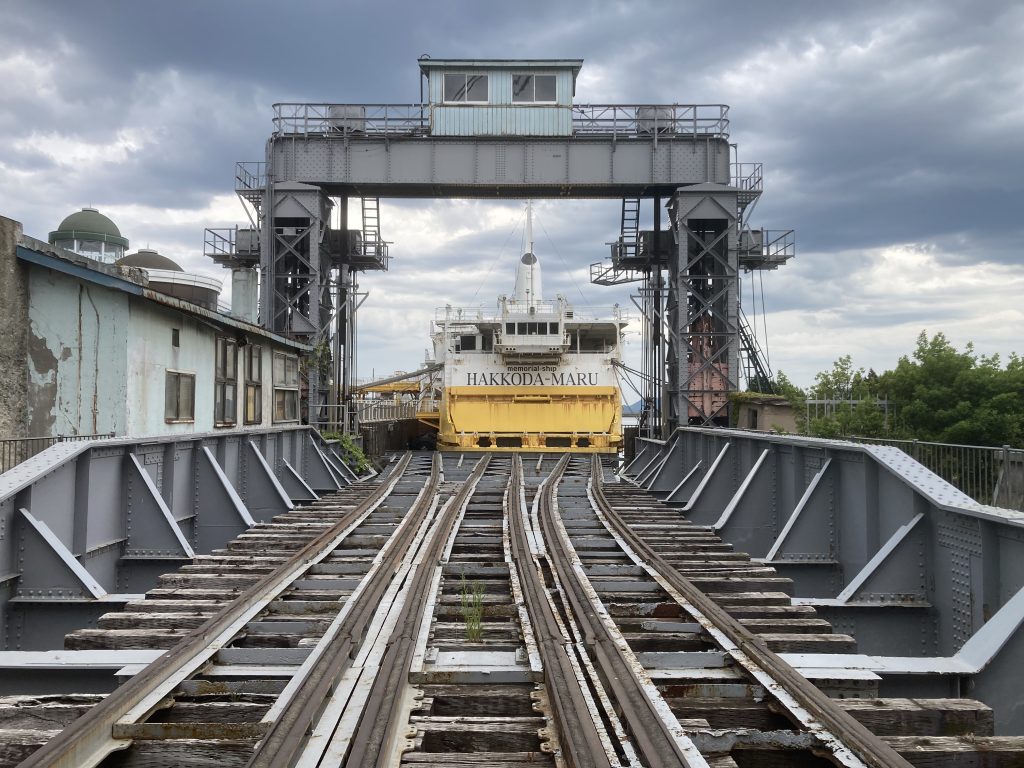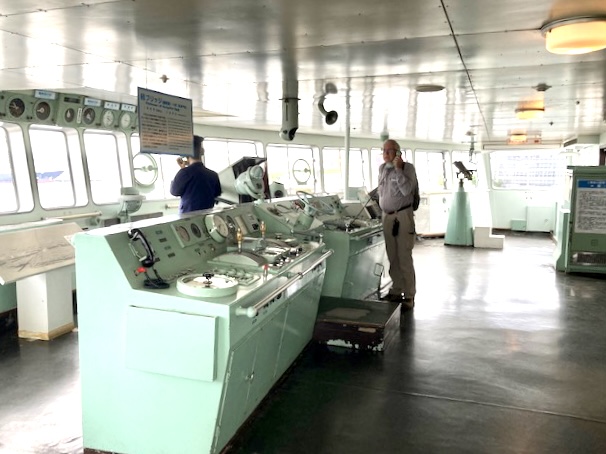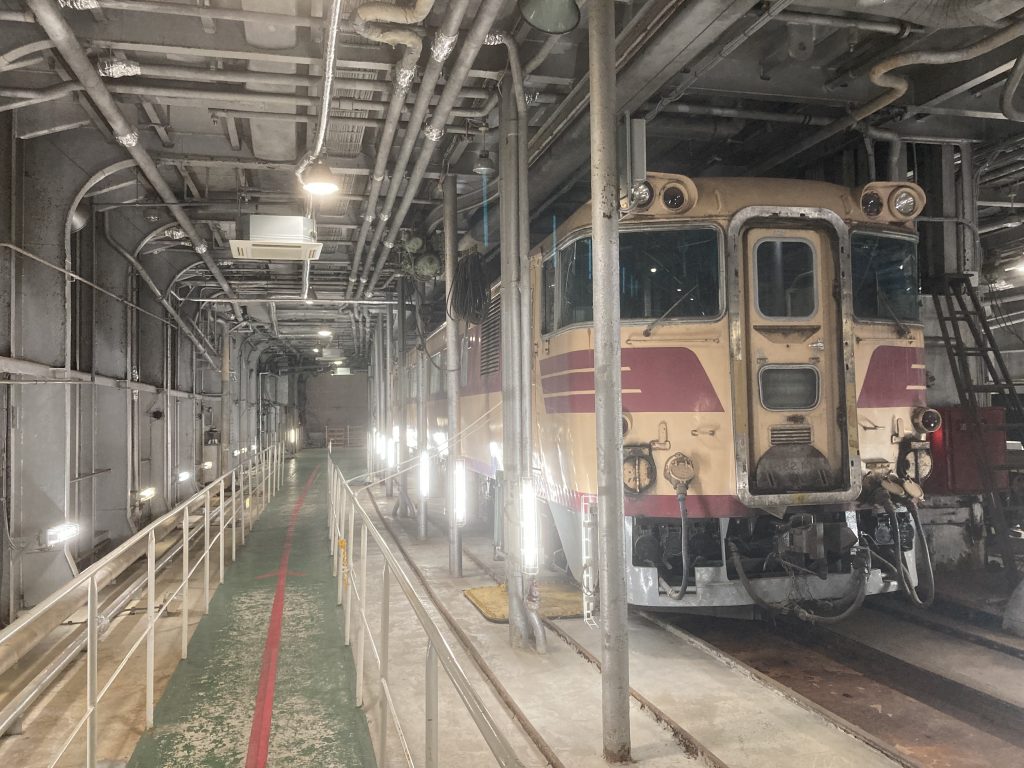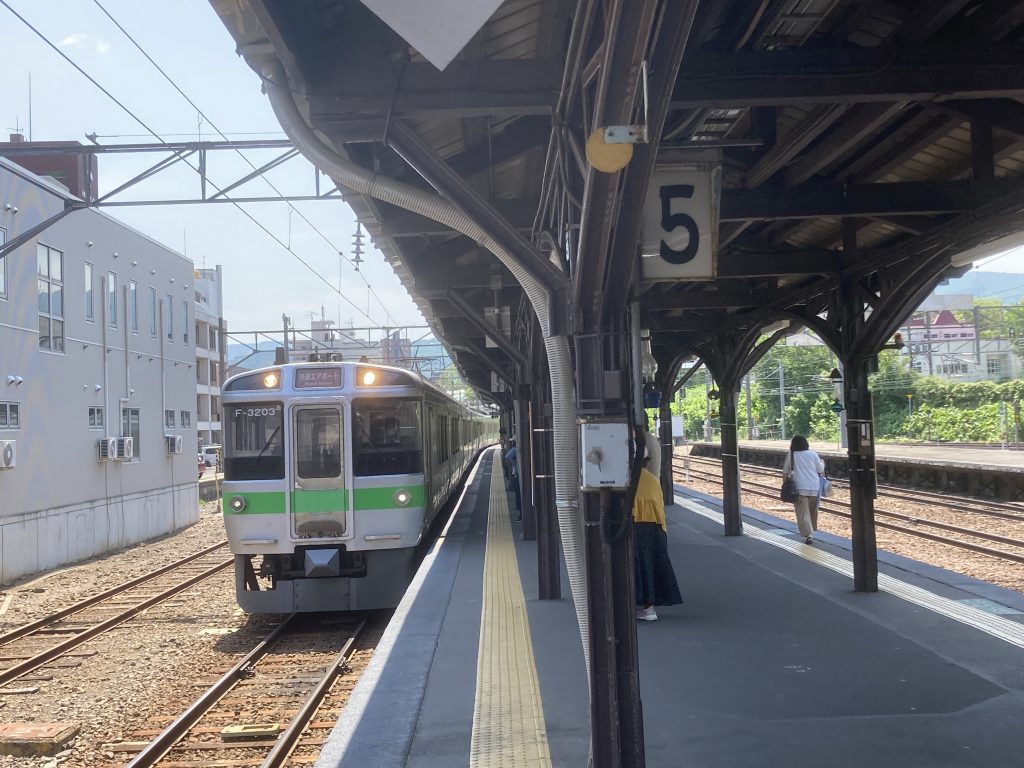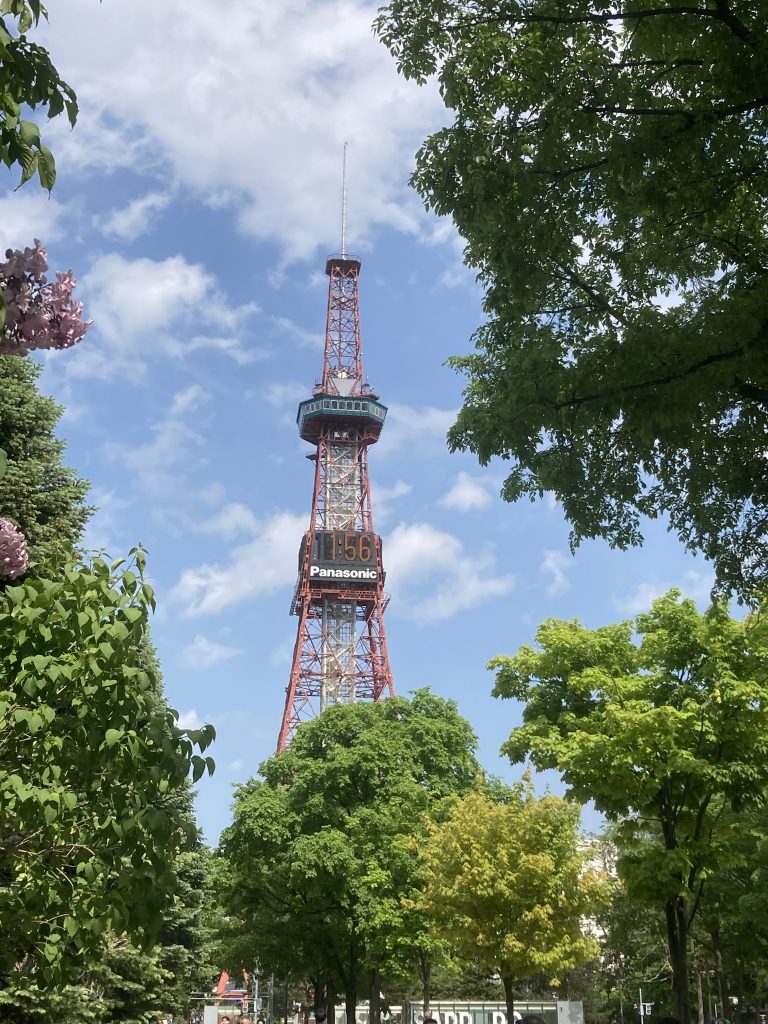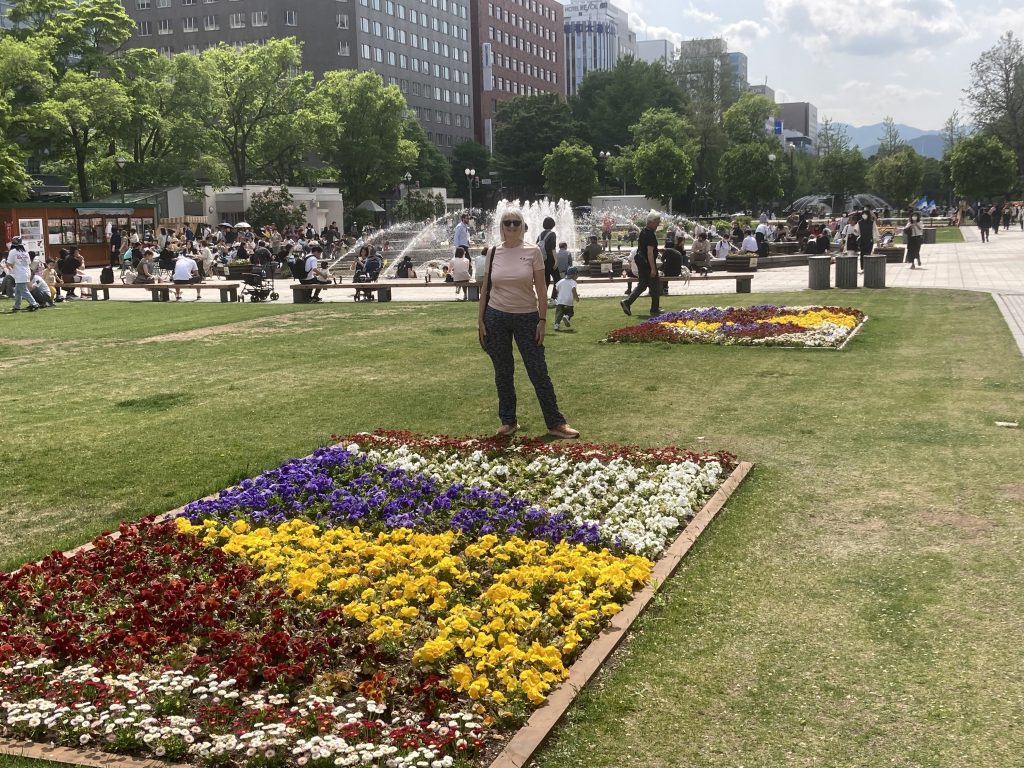24-27 May
Aomori
The Queen Elizabeth sailed north out of Yokohama, with one full day at sea before docking at the town Aomori on the northern tip of Honshu Island. Aomori grew because it was the home of the Seikan ferry which plied the 130 km across the Tsugaru Strait to the Island of Hokkaido, which became part of Japan in 1869.
Japan had a policy of economic development on Hokkaido as a bulwark against Russia, involving European and American advisers. They left a legacy – the Americans with buildings, including the Clock Tower in Sapporo and the Germans with the now famous Sapporo beer.
In 1954 a typhoon caused one of the Seikan ferries to capsize with the loss of over 1,000 souls. This disaster gave rise to a better design of ships, with a door at the stern, but also led to building a tunnel on the sea bed to provide a crossing by car and train to Hokkaido.
Currently the Shinkansen bullet train goes to Hokkaido through the Seikan Tunnel but does not yet reach Sapporo. The ferry service ceased to operate, after 80 years’ service, in 1988 on the same day as the Seikan Tunnel opened.
Exploring Aomori
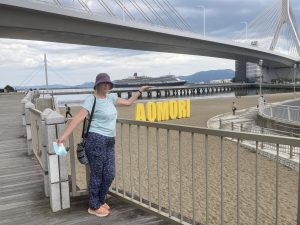
We set off from the towering Queen Elizabeth by foot, greeted by cheering schoolchildren in brightly coloured outfits. We found a Starbucks and used their excellent internet to respond to emails and WhatsApp messages, picking up news and working on our blog for a couple of hours. We did some necessary shopping in a department store, before spending a delightful and unexpected time on the Memorial Ship Hakkoda Maru.
This is a disused Seikan ferry, which used to carry both cars and trains. It comprises a museum about the historic ferry service, with video, a tour of the ship, and helpful QR codes linking to descriptions in English. A thoroughly engaging tour, especially as we could compare the ferry to the magnificent vessel moored just across the harbour, on which we had arrived in Aomori and which itself was proving a big attraction to the residents of Aomori!
Otaru and Sapporo
Overnight we sailed though the Tsugaru Strait ourselves docking at Otaru. After breakfast, we left the Queen Elizabeth on foot again, to explore the smaller town of Otaru, on Hokkaido, the northernmost island of Japan. Otaru gained its wealth from herring fishing – mostly exported to the Japanese mainland and used for agricultural fertiliser.
It was quite a walk, as the ship is so large that it had to dock far away from the town centre. We passed some touristy shopping streets, ending up buying return railway tickets to take us to Sapporo. Those old enough, may remember that the Winter Olympics were held here 1972.
The main purpose of visiting Sapporo was to search for some warmer clothing for Lynne, but also to escape from the hordes of tourists, descended from both our ship and another Japanese vessel flooding the small town.
The train (actually an express service to the airport nearest Sapporo) rattled along at a good pace, close by the seashore to start with, picking up commuters on the way. Our train journey cost us 1,500¥ each, about £9.00, as opposed to the fare charged by Cunard to take us to Sapporo and back – $79.00 each!
The obligatory Starbucks provided an amount of ‘internet fuel’ to write this blog, while Lynne went out on a hunt for a warm pullover, weighing nothing and taking no room in our rucksacks. Hmm.
After a really confusing search, through the labyrinthine warrens of shopping malls near the station, we finally found a sweater for Lynne we hope will be warm enough, and struck out on a short walk in the city. We only had about an hour, but we made our way to Odari park, with beautiful flowerbeds and fountains where children were playing in the water. On our walk, we also found the famous clock tower, and took pictures of the TV tower. The clock tower is renowned for being a bit of an anticlimax to sightseers, but it was quite the reverse for us as we hadn’t expected to see it at all.
Returning to Otaru provided its own excitement – the train we had decided to take was signposted on the station displays as “Out Of Service” (in Japanese and English). A hasty query at an Information booth saw us running to catch a train just departing platform 2…. This took us back to Otaru in time enough to alight at a closer station to the port, walk through a massive shopping mall and enjoy a magnificent display of Japanese Drumming, by the side of our ship. We had hoped for a bit of internet, supposedly provided for us on land, but to no avail.
All passengers had to pass by a Japanese exit Border Control, on the ship, to get our passports checked and stamped. As our departure neared, a sizeable crowd had gathered on land – this was the biggest ship that had ever entered Otaru, and it was her maiden visit. The Japanese Drumming group performed a spirited number, while people on-board and on-land waved farewell, with the ship’s horn chiming in. How wonderful.
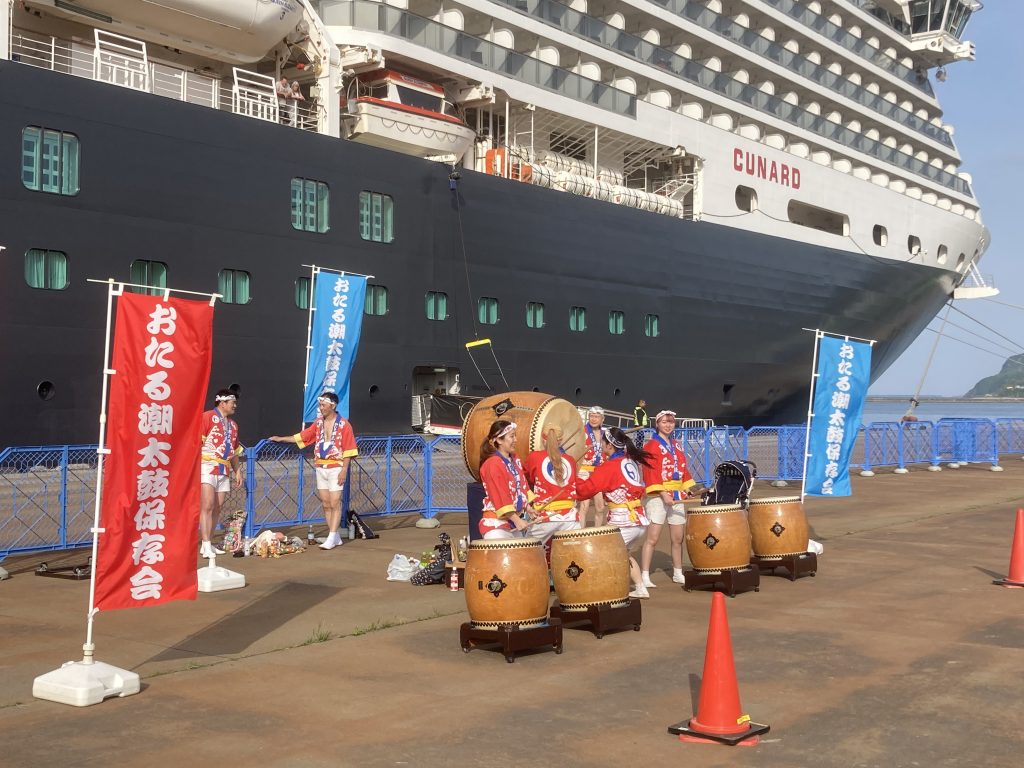
Leaving Japan
This last part of our journey though Japan on board the Queen Elizabeth is very different to our earlier journey through Japan. Of course, we are based on an English-speaking vessel, with only a token element of Japanese food. Apart from our independent excursions ashore, ship passengers are molly-coddled and we could almost forget that we were in Japan.
This was our third visit to Japan, which remains an incredibly welcoming country to visitors. Everything is so well ordered and sparkling clean, if sometimes completely incomprehensible due to our lack of knowledge of even basic Japanese. Never a worry to get “caught short” whilst out exploring, as there will always be a gratis clean toilet (with heated loo seat) to be found, small seats to strap infants into, and a hook by each gentlemen’s urinal for an umbrella!
Japan has many hills and mountains (which we raced through on the bullet train) and as we reached Northern Japan we could see patches of snow. It was warm down south but distinctly colder at the northern end.
Arigato Japan, until next time…
